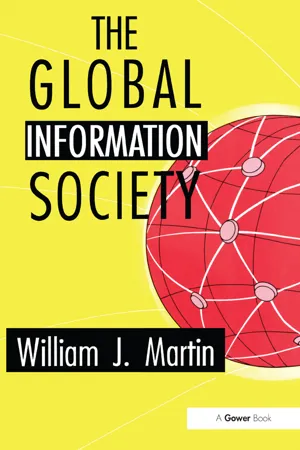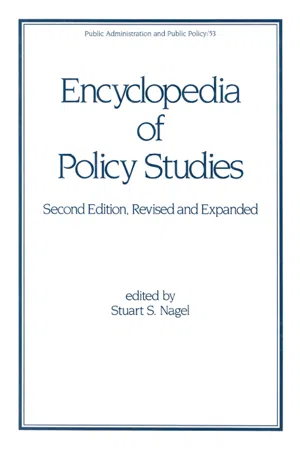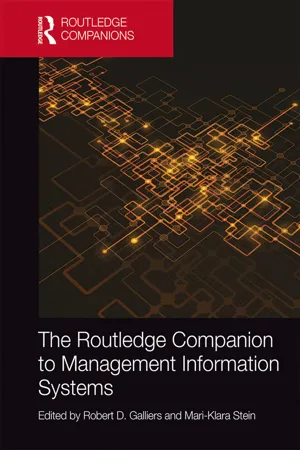Computer Science
Societal Impact
Societal impact refers to the effects that computer science and technology have on society, including social, economic, and cultural changes. It involves examining the positive and negative consequences of technological advancements and considering how they affect individuals, communities, and society as a whole. Understanding societal impact is crucial for responsible and ethical development and implementation of technology.
Written by Perlego with AI-assistance
Related key terms
3 Key excerpts on "Societal Impact"
- eBook - ePub
- William J. Martin(Author)
- 2017(Publication Date)
- Routledge(Publisher)
6 The Social Impact of Information and Communications TechnologiesOf central concern to the study of information societies are those questions arising from the social impact and implications of the information and communication technologies. Taken to extremes this could embrace life in its entirety, the study of which could well reach encyclopaedic proportions. In this single chapter all that is attempted is an assessment of impact in such important information-related spheres as data security and protection, computer crime, privacy, intellectual property, censorship and freedom of expression, computer-mediated work and the networking of society.SECURITY OF INFORMATION
Information stored on computer systems is often far more valuable to an organization than the computer hardware itself. Whether the basis of day to day operational efficiency or a source of competitive advantage, it must be protected against loss, damage, improper use or unauthorized access. All computer systems are vulnerable to accidental data loss through the operation of natural phenomena such as fires and floods and from hardware and software errors, telecommunications failures, electrical outages and power fluctuations. In fact, with a reported 60 per cent to 70 per cent of disasters caused by power failure, many organizations have installed uninterruptible power supply (UPS) systems and backup diesel generators to secure their information.1It is obvious that as it becomes increasingly underpinned by information and communications technologies, society itself is vulnerable to such phenomena. Unfortunately, a much more serious threat to the security of information and communications systems emanates from a burgeoning criminal fraternity drawn to the lure of lucrative, and at times relatively easy, profits in an information intensive society.COMPUTER CRIME
Computer crime can be broadly defined as a criminal act either aimed at a computer or carried out with its assistance. This includes the unauthorized use of, or access to, information systems, or the modification of programs either for profit or for malicious intent. The most common form of computer crime involves theft. Computer theft can involve the theft of money, for example the illegal transfer of funds from one bank account to another; the theft of information, for example by tapping into data transmission lines or databases without payment; or the theft of goods by diverting them to the wrong destination. 2 - eBook - ePub
- Stuart Nagel(Author)
- 2020(Publication Date)
- CRC Press(Publisher)
Impact analysis links the identification of significant impacts to their evaluation in the formulation of effective policy to deal with them. It is here that serious analysis of magnitudes and likelihoods of occurrence are made. In this task, disciplinary expertise and quantitative skills, such as cost-benefit analysis and environmental modeling, are most useful. Considered here are both impacts of a technology on its societal context and impacts of that societal context on a technology. Such areas as law, regulation, and values provide good examples of the latter, whereas environmental and economic impacts illustrate the former in many cases. This treatment briefly reviews some of the major categories broken out by discipline.One of the most significant categories of impacts is economic. As Mansfield (1989) noted: “the rate of technological change is perhaps the most important single determinant of a nation’s rate of economic growth.” Yet technological change that benefits the economy must be embedded in economically usable products, processes, and services. On the macro-level, techniques, such as input-output analysis, that track economic flows across industry lines may sometimes be useful. A most common technique used on the micro-level is cost-benefit analysis in its various forms. Substantial treatises (e.g., see Sassone and Schaffer, 1978) have been written on this subject. Conceptually it appears very simple. An innovation costs so much money. It produces so much in benefits. If the benefits exceed the cost, then the innovation is financially successful; if the costs exceed the benefits, then it is not. Yet this procedure is fraught with perils. First, in many cases, the future costs and benefits of an innovation can only be estimated with a substantial degree of uncertainty. Thus, from one perspective, costs could substantially exceed benefits; from another, the contrary would be the case. Beyond the mere estimates, this issue turns on where the boundaries of the innovation are drawn, with everything outside being considered external and thus not counted as a cost or benefit. Costs to distant locations from pollution are thus often ignored. Then there is the time value of money that also requires an estimate, since the forecasting of interest or discount rates is not particularly accurate. Furthermore, there may need to be different discount rates for the private and public sectors. Then the time frame of the analysis needs to be considered. Sometimes extending the time frame will turn an unprofitable innovation into a profitable one; sometimes the opposite will be true. Short payback periods required by management before an innovation can be developed as a product have created grief with many corporate R&D directors by preferring the short term to the long. The serious application of cost-benefit analysis requires sound judgment, careful analysis, and a clear understanding of why and how judgments were made. - Robert D. Galliers, Mari-Klara Stein, Robert D. Galliers, Mari-Klara Stein(Authors)
- 2017(Publication Date)
- Routledge(Publisher)
The first relationship refers to a general theory of technology and concerns the causal mechanisms through which technology artefacts, in relation to human action, come to make a difference in social settings. Research by IS scholars in the 1970s challenged technology deterministic views about the impact of computers in organizations and highlighted the importance of the social environment of the capacity of an organization to develop computer applications and achieve expected productivity benefits (Kling 1980; Mumford et al. 1979). On the whole that early research on ICT innovation also rejected social deterministic positions that derive the features and effects of technology from social conditions of their development and use.Indicatively, scholars endorsing the ‘socio-technical design’ approach aspired to create a better work environment by designing both technology functions and new work arrangements, in effect calling attention to the interaction of people with ICT artefacts in the context of their work (Land et al. 1980; Mumford et al. 1979). Empirical studies supported arguments that the results achieved by developing computer-based information systems at the workplace can neither be predicted by the material properties of the technologies alone nor by the behavioural traits of workers alone, thus forming the core idea of the socio-technical perspective of ICT innovation (Markus 1983). It was suggested that it is the interaction of employees with the computerized information systems in their work contexts that produce observed effects, whether positive, such as more productive work practices, or negative, such as resistance to the new technology systems. Markus and Robey proposed the interaction of computer artefacts and human agency as the fundamental causal mechanism of the organizational effects of computers (Markus et al. 1988).The causality between ICT innovation and social change has been further elaborated in the 1990s by drawing from Science and Technology Studies (STS) in sociology (Howcroft et al. 2004) and more recently with a stream of theoretical debates on socio-materiality (Leonardi et al. 2012). A consensus has been formed regarding the importance of considering ICT innovation and its effects as relationships of the capacity of artefacts to make a difference with the socially embedded capacity of people to act. Attention to technology and human actor relationships is drawn through a variety of concepts, such as actor networks – with technology artefacts assumed actor status – imbrication or entanglement. Their ontological and epistemological differences notwithstanding, all these concepts contribute to a view of the digital revolution as the closely interrelated processes of technology construction and social change, bearing potential for the formation of new socio-material conditions.
Index pages curate the most relevant extracts from our library of academic textbooks. They’ve been created using an in-house natural language model (NLM), each adding context and meaning to key research topics.


